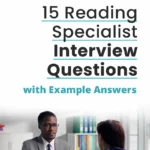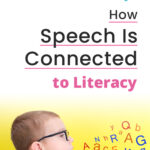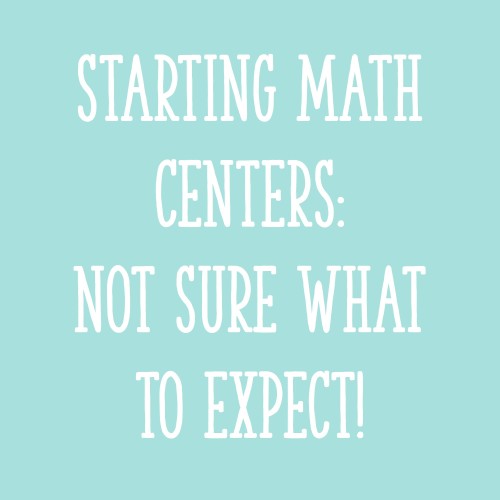Hi there! Today is the first in a series of posts about a great professional development book I’m reading: The Literacy Teacher’s Playbook, Grades K-2. Click on the picture below to read about and purchase the book:
The reason I decided to read this book (and potentially the 3rd-6th grade version as well) is because I’m moving into a position as a reading specialist this fall. This summer, I’m trying to do some reading to sort of expand my thinking about literacy instruction. Even though my master’s degree is in literacy instruction for K-12 students and I’ve worked with students as old as 13, I feel like my thinking gets kind of hyperfocused on whatever grade level I’m currently teaching. This past year, I’ve been super focused on literacy learning for 2nd graders, because that’s what I was teaching. So even though I’ve learned a whole truckload of information about teaching literacy in other grades, it’s currently stored in my brain’s attic. 🙂 Time to unpack it!
Author Jennifer Serravallo (love her work) set out to write this book to help teachers learn how to better collect, analyze, and interpret data, as well as use that information to take action with students. She really emphasizes that the book is NOT about getting bogged down by data and assessment – it’s about being empowered by it. I was quite happy to read that in her introduction! Data is great, but unnecessary or excessive data collection is not. Jennifer also uses the word “data” to mean student work, running records, etc. – NOT just standardized test scores.
Chapter 1 in the book is all about collecting data (assessment). There is so much useful information in it that I would bore you to death if I even just barely touched on all the important parts. 🙂 Instead I’ll write about three assessment tips and strategies that stood out to me: reading logs, engagement inventories, and a way to record students’ fluency.
Reading Logs
One data collection method that Jennifer recommends is having students keep a reading log to record reading both at home and at school. Reading logs are great because you can see what students are reading (series, genres, etc.), how long they are spending reading, and how much they are reading – important data points, since reading time and volume matter in kids’ literacy development. I tried out reading logs with my 2nd grade students this past year. To be honest, I was not great about keeping up with checking their logs. The problem was that when students keep reading logs in a reading workshop classroom, the teacher can easily glance at the log when she confers with students. I was not teaching in a reading workshop school, however, and I was expected to do guided reading while students read independently. I wasn’t able to confer with kids one-on-one because of our packed schedule and the school expectations – therefore, I wasn’t looking at their reading logs as much as I should have been. Looking back, I could have had the kids bring their logs with them to the guided reading table – or I could have just instructed them not to take them home on certain nights so that I could look at them. The takeaway is that if you do reading logs (which I do recommend), you carve out time to look at them throughout the year, otherwise the kids won’t keep up with them.
Engagement Inventory
Another data collection method that Jennifer suggests is an engagement inventory. To do this, you would sit back and watch your kids for an entire silent reading period, instead of conferring with them or pulling small groups. For K-1, you’d pay attention to how long kids can sustain their reading, how quickly they finish books, etc. For 2nd graders or older, you’d note how long they can sustain reading without taking breaks to go to the restroom/get a drink, how often they stop and jot notes on sticky notes, etc. I love this idea, because when you’re pulling small groups or conferring with kids, you might catch a glimpse of who is off task, but you don’t really get a big picture sense until you really sit back and watch the entire class for a whole period. The engagement inventory would definitely be something you’d do on a very occasional basis.
A Strategy to Record Students’ Fluency
When Jennifer discusses assessing students’ fluency, there was one particular recommendation that I really loved. She writes, “Instead of listening only for miscues while child reads aloud, listen with an ear toward fluency to take a fluency record. Make a slash mark each time you hear a student pause…This can be done as its own assessment or part of a running record” (Serravallo, 2013). For example, if a child is reading a sentence that says, “The bear went over the mountain” and pauses between “over” and “the,” you would mark it like this:
The bear went over / the mountain.
Making those marks allows you to go back and see if a child is reading with appropriate phrasing. Jennifer also recommends marking a child’s miscues for the first portion of a text, and then listening to and marking the child’s fluency on the second portion of the text. Seems very manageable and useful! I definitely planning on doing this next year.
Final Thoughts on the Chapter
What I’ve written here doesn’t really represent the chapter as a whole…it also has lots of good stuff about assessing comprehension, decoding, spelling, and writing. Overall, I’d say the main message of the chapter that it’s important to assess the different aspects of children’s reading and writing development, and it’s important to assess them in a variety of ways. For instance, don’t assume that a child isn’t thinking about a text if he doesn’t jot much down on sticky notes – also listen to the child talk to a partner or reading group about the text before you draw conclusions.
Abbey over at A Teacher Mom is hosting this bloggy book study, so hop on over to her page {An InLinkz Link-up} to see what other bloggers thought of the chapter, too! 













